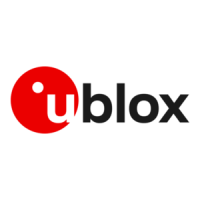NINA-B3 series - System integration manual
UBX-17056748 - R13 Software Page 21 of 72
C1-Public
clock source configuration
To configure your application for use with an internal RC oscillator or external LFXO in the Nordic SDK,
see reference [18].
2.2.2 Zephyr
Zephyr [19] is a widely adopted open-source Real Time Operating System (RTOS) that is supported
on a multitude of chipsets, including the nRF52840 chip in the NINA-B3 module. The Zephyr project
is supported by the Linux Foundation.
Nordic Semiconductor provides the nRF Connect SDK for development using the Zephyr OS, but it is
also possible to use a command-line environment for example.
Getting started with Zephyr on the NINA-B3 module
Follow the procedure below to get started with Zephyr:
1. Install the Toolchain Manager from the
nRF Connect for Desktop
application and from there
install the nRF Connect SDK. For more information, see reference [23].
2. If a command line environment is preferred, see the Getting Started section on the Zephyr
website [19].
Defining a board configuration in Zephyr
The Zephyr OS is in many aspects similar to Linux and uses a similar structure of make files and config
files as the Linux kernel. It also uses a device tree file to set up the pin mapping for your board.
Although an example configuration for EVK-NINA-B3 is not yet included in the Zephyr distribution,
the configuration can be downloaded from the u-blox shortrange open CPU github repository [20].
Copy the configuration to the <install directory>/zephyr/boards/arm folder and the build the
project from your preferred environment.
Building for the NINA-B3 EVK using nRF Connect SDK
To build the blinky sample using the nRF Connect SDK open the sample as shown in Figure 6. You can
then build and flash from within Segger Studio.

